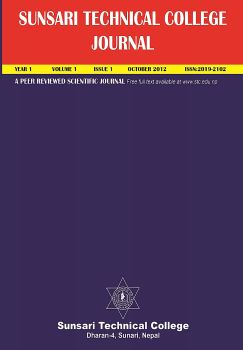Drug use pattern in Primary Health Care facilities of Kaski District, Western Nepal
DOI:
https://doi.org/10.3126/stcj.v1i1.8652Keywords:
Drug utilization studies, Essential drug list (EDL), Primary Health Care center (PHC), Health Post (HP), WHO drug use indicatorsAbstract
Background: Drug utilization research has been defined by the WHO as .the marketing, distribution, prescription and use of drugs in a society, with special emphasis on the resulting medical, social and economic consequences. Several studies of drug utilization conducted in many developed countries shows wide evidence of irrational drug use.
Objectives: To assess the drug use pattern in Primary Health Care (PHC) facilities of Kaski district, Western Nepal.
Methods :A prospective cross-sectional descriptive study was conducted in 11 PHC facilities of Kaski district using WHO core drug use indicators.
Results: A total of 301 prescriptions was analyzed. The average age of patients visiting PHC was 33.11 years (female 35.79; male 30.40). The average number of drugs prescribed was 2.29. Percentage of encounters with at least one antibiotic prescribed was 57% whereas encounters with at least one injection prescribed was low 3%. The total percentage of drugs prescribed using generic names was found to be 59.02% and percentage of drugs prescribed from EDL was 85.19% respectively. The average consultation and dispensing time of 109 patients was 2.02 minutes and 42.52 seconds. Only 30% of patients had adequate knowledge of drug whereas none of the drugs were adequately labeled. Percentage of drugs actually dispensed was 89.63%. All health facilities had availability of Essential Drug List (EDL). The total percentage of availability of key drugs in study PHCs was 89.69%.
Conclusion: The study shows trend toward irrational practice mainly on antibiotics use and non- generic prescribing in most facilities studied. Patient care provided by health facilities studied was insufficient and thus effective intervention program for promotion of rational drug use practice is recommended in PHC facilities.
DOI: http://dx.doi.org/10.3126/stcj.v1i1.8652
Sunsari Technical College Journal Vol.1(1) 2012 1-8




